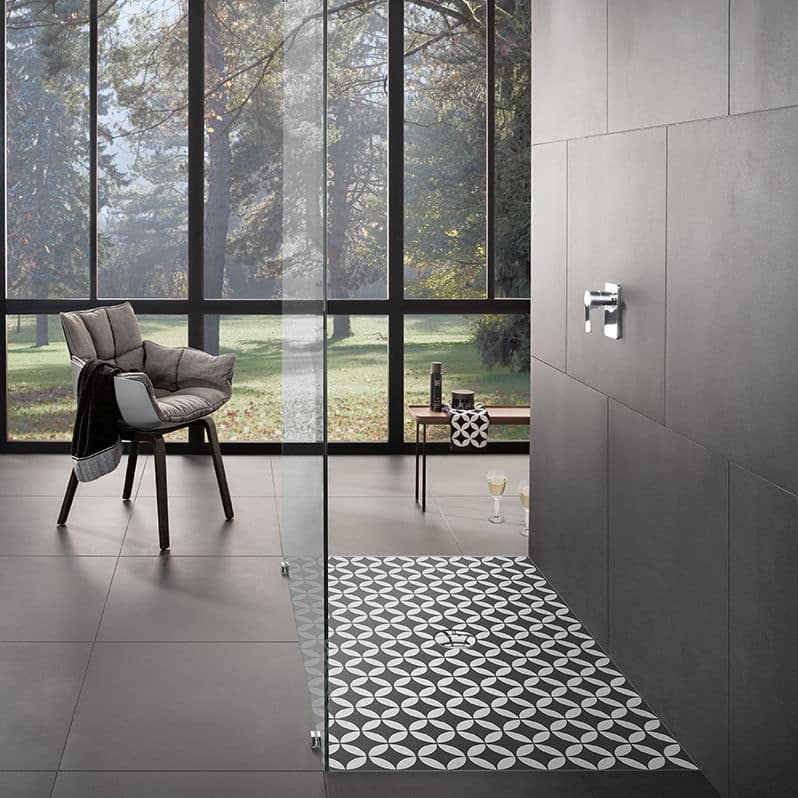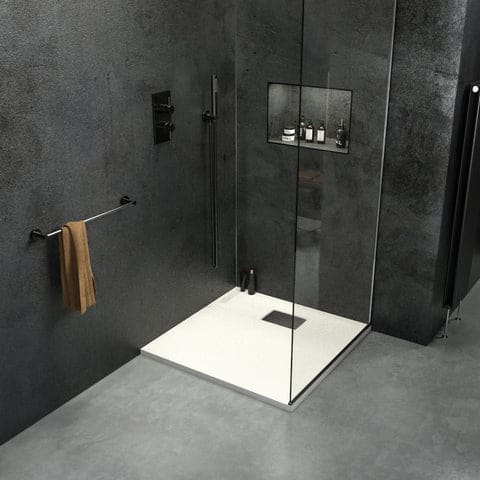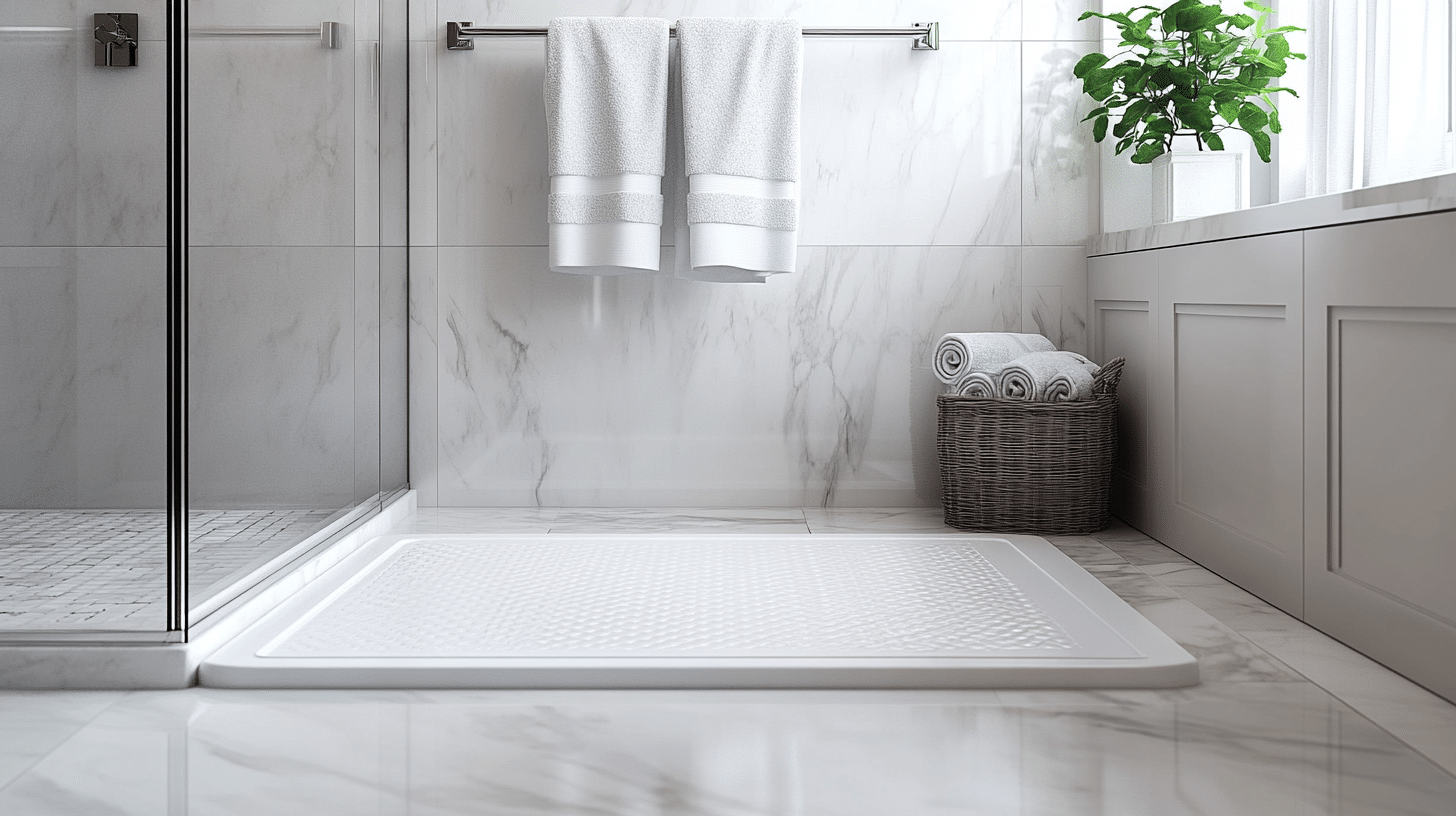Understanding Your Options
Selecting the right shower base is a decision that influences both function and style. Homeowners and renovators often weigh the benefits of mineral composite, acrylic, and tile when planning their bathroom upgrades.
While each material offers distinct advantages, understanding their differences in installation, durability, and upkeep helps ensure an informed choice. The shower pan plays a crucial role in water containment and structural support, making the material selection essential.
Mineral Composite: Strength and Elegance Combined

Composition and Features
Engineered from natural stone aggregates blended with resin, mineral composite pans present a solid, refined appearance. This material provides a high-end aesthetic without the weight and fragility of full stone alternatives.
Installation Simplicity
Despite their sturdy construction, these shower bases are designed for straightforward installation. Many come pre-leveled, eliminating the need for mortar beds or extensive subfloor preparation.
Durability and Performance
Scratch resistance and excellent thermal retention distinguish mineral composite from other choices. Their ability to withstand heavy usage without compromising structural integrity makes them a long-lasting solution.
Cleaning and Upkeep
Non-porous surfaces deter mold growth and staining, reducing the frequency of deep cleaning sessions. A mild cleanser and soft cloth maintain its sleek appearance without extra effort.
Acrylic: Lightweight and Cost-Effective
Material Composition
Acrylic shower bases are molded from plastic reinforced with fiberglass, creating an affordable yet visually appealing option. Their lightweight nature simplifies handling and transport, making them a common choice for DIY projects.
Installation Considerations
Flexible and easy to position, acrylic pans are user-friendly for homeowners and professionals alike. They often include built-in supports, reducing the complexity of securing them in place.
Lifespan and Durability
While resistant to chipping, this material is prone to scratching over time. It maintains its glossy finish for years with proper care but may require refinishing in high-traffic bathrooms.
Cleaning and Maintenance Requirements
Simple maintenance is a key advantage. A non-abrasive cleaner prevents dullness, and routine rinsing keeps soap scum at bay. However, exposure to harsh chemicals may cause surface damage.
Tile: A Customizable and Classic Choice

Design Flexibility
For those desiring a personalized touch, tile offers unmatched versatility. Various shapes, colors, and textures create visually striking patterns, enhancing the overall bathroom aesthetic.
Installation Complexity
Among the three options, tile pans require the most labor-intensive setup. Properly installing a waterproof membrane, setting tiles, and sealing grout demands expertise. Precision is crucial to avoid leaks and ensure longevity.
Durability and Wear Resistance
When properly maintained, a tiled shower base remains functional for decades. However, grout lines present a vulnerability, as they may crack or deteriorate over time, necessitating periodic reapplication.
Cleaning and Maintenance Needs
Frequent scrubbing and resealing help prevent mold accumulation and discoloration. While durable, maintaining the grout’s integrity is essential for preventing water damage beneath the surface.
Choosing the Best Option for Your Bathroom
Budget Considerations
Acrylic provides the most cost-effective solution for those looking to minimize expenses. Mineral composite strikes a balance between affordability and luxury, while tile often involves the highest upfront investment due to labor costs.
Longevity and Resilience
For homeowners seeking a robust solution, mineral composite excels in endurance. Acrylic suits those prioritizing convenience, while tile appeals to individuals desiring a tailored aesthetic, provided they are willing to commit to upkeep.
Ease of Maintenance
Minimal effort is required for cleaning mineral composite and acrylic surfaces, making them ideal for those preferring low-maintenance options. Tile, while beautiful, demands routine attention to preserve its condition.
Final Thoughts
Personal preferences, budget constraints, and maintenance expectations all play a role in determining the ideal shower pan material. Whether opting for the sleek resilience of mineral composite, the practicality of acrylic, or the artistic possibilities of tile, each option serves a unique purpose. Thoughtful consideration ensures a lasting and functional bathroom upgrade tailored to individual needs.

